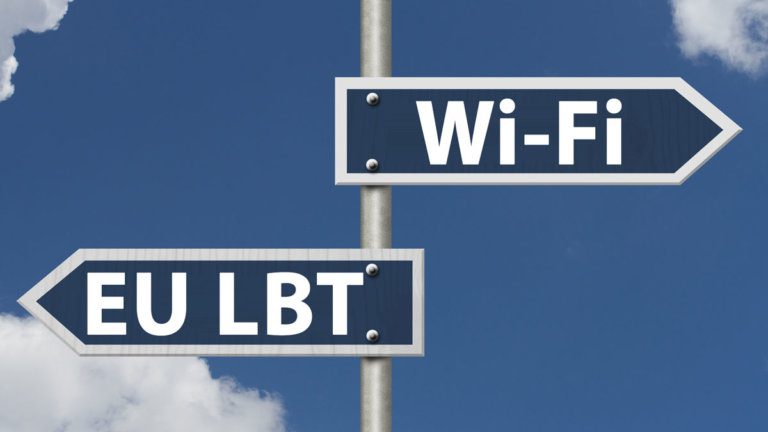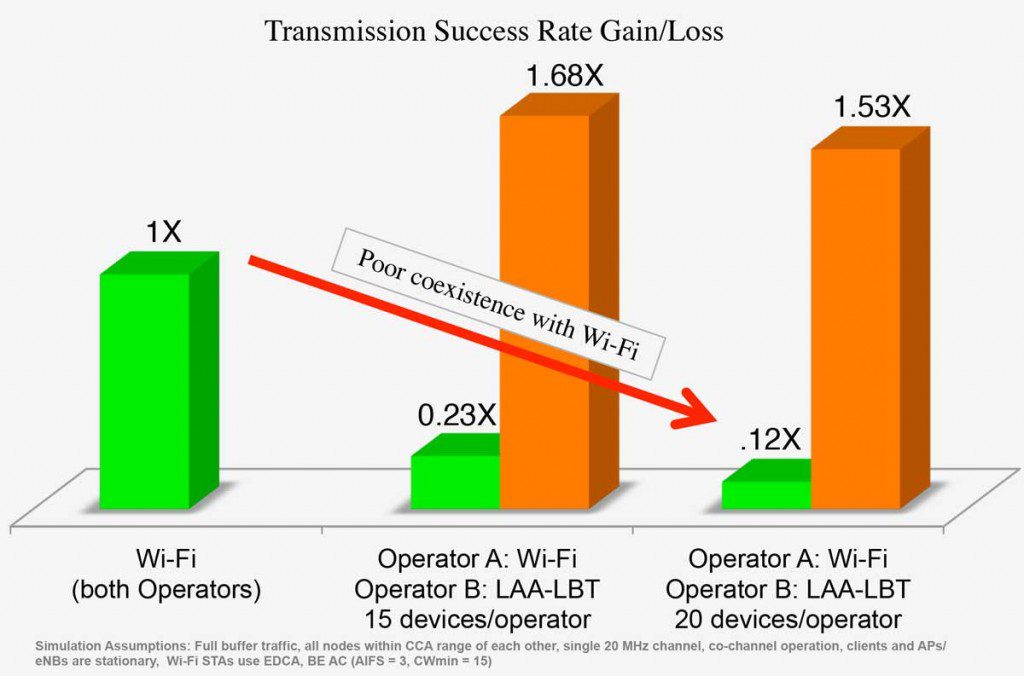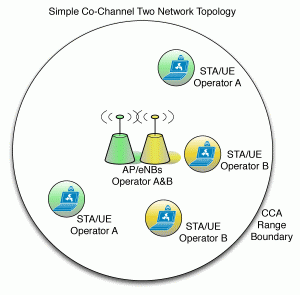Technology
Wi-Fi vs EU LBT: Houston, we have a problem

Licensed Assisted Access using LTE is the nascent LTE tech that puts cellular signals into the unlicensed spectrum. It goes by LAA-LTE or LTE-U for short. By all accounts the blitz is on to push this new tech into the field as fast as possible. NTT DoCoMo and Verizon have already announced their testing LTE-U. In addition the effort in 3GPP (the mobile standards body) on the approved study item is going fast & furious after kicking off at RAN1 78bis in Ljubljana Slovenia in early October.
The "license assisted" moniker is an indication of something unique: though it uses unlicensed spectrum, it is actually linked to licensed spectrum. This is a technology for mobile operators to supplement their networks by integrating unlicensed spectrum. Unlicensed spectrum will "assist" licensed LTE.
Having already decided to retain this link to licensed networks, 3GPP is now turning its attention to implementation. A key issue for 3GPP to tackle when creating LAA-LTE is how to modify LTE so that it can fairly share spectrum with other technologies e.g. Wi-Fi. As some have pointed out (see blog 1, blog 2, blog3, and most recently blog4) it is still hotly debated how nicely LTE-U will ultimately play with Wi-Fi.
Three coexistence methods commonly appear in contributions to 3GPP so far; channel selection, some form of duty cycling the LTE signal, and Listen-Before-Talk. Combining channel selection and LBT is also quite popular. This post will be the first of a series looking more closely at the pros and cons of each approach.
We thought it would be fun to go straight to the Holy Grail, Listen-Before-Talk.
Listen-Before-Talk
Of the three methods, Listen-Before-Talk, or LBT for short, is thought to be the most onerous to implement, but also the most likely to provide fair coexistence with Wi-Fi. After all, Wi-Fi does its own flavor of LBT called the Distributed Coordination Function (DCF), or Enhanced Distributed Channel Access (EDCA) depending on the Wi-Fi vintage. For more on how these LBT schemes work, see this great explanation from Cisco.
Now, some regulatory regions e.g. the EU and Japan, require unlicensed spectrum users to use LBT for accessing certain spectrum bands. However, if you look closely at the EU regulations, they provide two options for LBT schemes. Option 1 is to use the DCF/EDCA as defined in Wi-Fi standards. The other option is to use one of two schemes, Load Base Equipment or Frame Based Equipment, defined in the document linked above. The rules for Load Based Equipment (LBE) (sorry for the acronym soup!) are similar to Wi-Fi LBT. A review of the recent 3GPP contributions confirms more companies are pointing to the LBE rules compared to the Frame Base Equipment alternative. Figure 1 depicts the backoff process for LBE.
 Figure 1 - EU Load Based Equipment LBT Rules
Figure 1 - EU Load Based Equipment LBT Rules
The key difference between Wi-Fi LBT and EU LBE LBT is the backoff process.
In EU LBE it is called the extended CCA. EU LBE uses a static range from 0 to q slots, where each slot is 20 µs. The value q is fixed for a given product, i.e., the extended CCA range is always the same size.
In comparison, Wi-Fi uses 9µs slots and what is called an exponential backoff. This means that when a Wi-Fi client determines a collision has occurred, it doubles the range used for the next attempt (the parameter is called the contention window).
To help visualize the effect of a static backoff range versus an exponential backoff, we created a Monte Carlo simulator. In the simulator, we create a set of nodes that follow the Wi-Fi rules, and a second set of nodes that use the EU LBE rules. We then model a million transmission opportunities on a shared channel. As time ticks on, clients are drawing random numbers, or counting down their timers, or winning the race and sending a packet, or in some cases sharing a random number with other clients and a collision happens. Figure 2 draws simple network diagram of what this would look like.
The results of the simulator show that static versus exponential backoff makes a big difference.
Figure 3 shows the transmission success rate gain or loss for 3 scenarios. Transmission success rate here is defined as the likelihood that each client can complete a CCA successfully and then send a burst without a collision. In this plot, the LAA clients were implementing EU LBE with a q = 32, or the maximum allowed backoff range i.e. most likely to provide good coexistence.
The three scenarios are listed below:
- Operator A = Wi-Fi, Operator B = Wi-Fi
- Operator A = Wi-Fi, Operator B = LAA-LBT, 15 devices/operator
- Operator A = Wi-Fi, Operator B = LAA-LBT, 20 devices/operator
In displaying the results, we use case 1 as the baseline for comparison.
In case 2, when Operator B deploys an LAA network using EU LBE, you can see that the coexistence behavior is poor. The LAA clients from Operator B show increased transmission success rates, while the Wi-Fi clients from Operator A show a 77% decrease.
In case 3 the coexistence is even worse still. With just 20 devices on each network, the Wi-Fi devices on Operator A’s network show an 88% decrease transmission success.
Not shown in figure 3 is what happens with low client counts. In a similar case to 2 & 3 but with 4 or fewer devices per operator, there does appear to be good coexistence; both Wi-Fi and LAA clients see improvement over the Wi-Fi to Wi-Fi case, case 1.
Also keep in mind this is for the most coexistence friendly case of where q = 32 for the LAA using EU LBE clients. If you decrease the q value, both the LAA using EU LBE clients and the Wi-Fi performance suffers.
Simulation Assumptions: Full buffer traffic, all nodes within CCA range of each other, single 20 MHz channel, co-channel operation, clients and APs/eNBs are stationary, Wi-Fi STAs use EDCA, BE AC (AIFS = 3, CWmin = 15)

Figure 3
Houston, We have a problem
Throughout the LAA-LTE development process, companies who are interested in ensuring fair coexistence between Wi-Fi and LAA have been looking to the EU LBT regulations as a safe haven. Thoughts like “well worst case we can adopt the EU LBT rules and we’ll be safe” are frequently expressed.
But after a closer look, it appears the EU LBT rules aren't the Holy Grail of coexistence we were looking for.
The key contributing factor is the EU LBE’s limited and non-adaptive backoff range. When client count rises, more clients are likely to choose the same backoff due to the limited and non-adaptive backoff range. The result is increased collisions and reduced performance as we have seen in the plots above.
Looks like it’s back to the drawing board to find additions to the EU rules to help mitigate these issues.
By Joey Padden —


